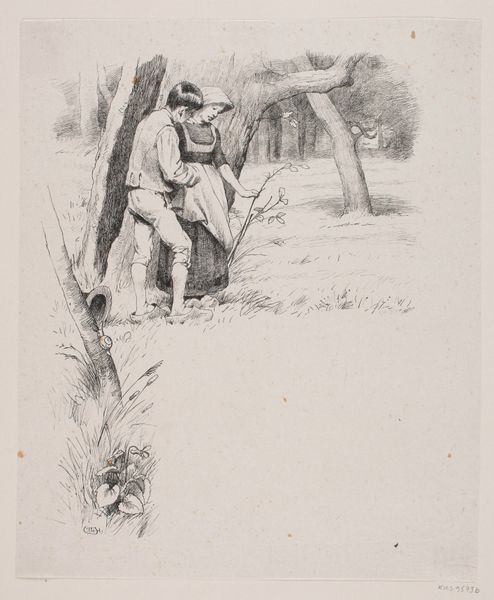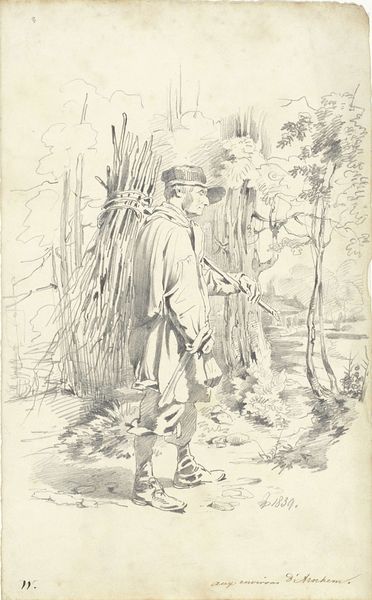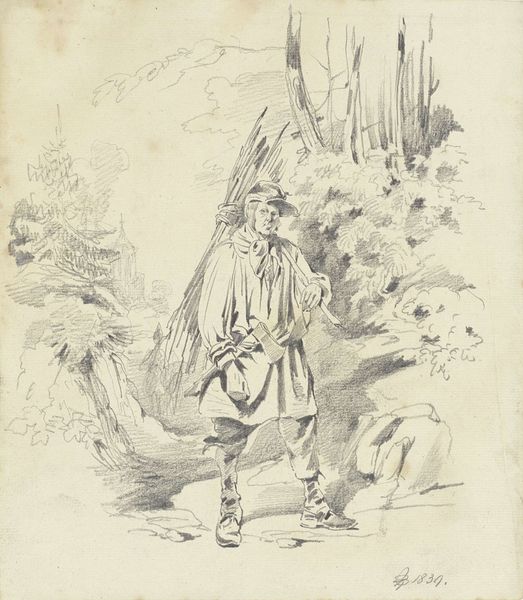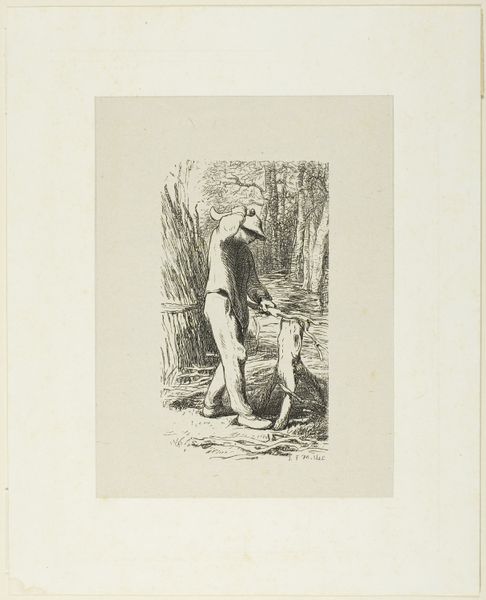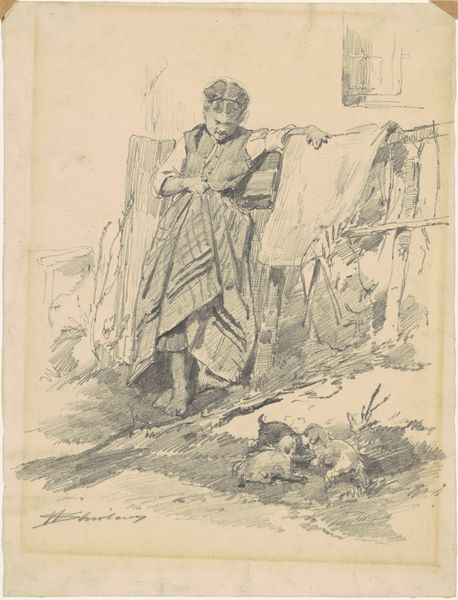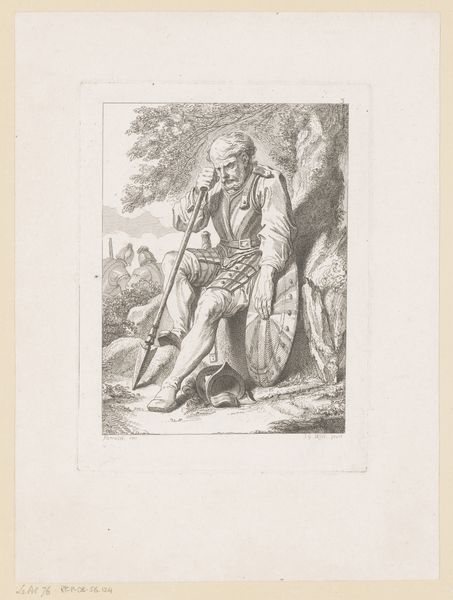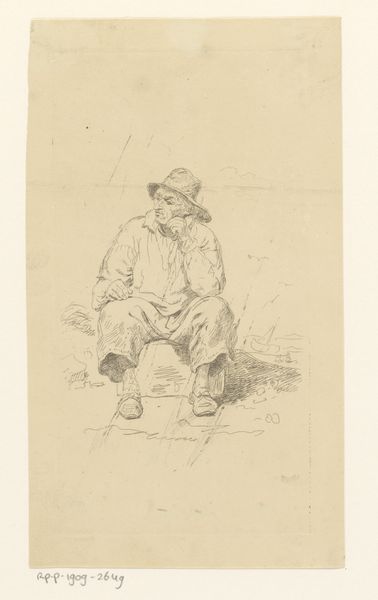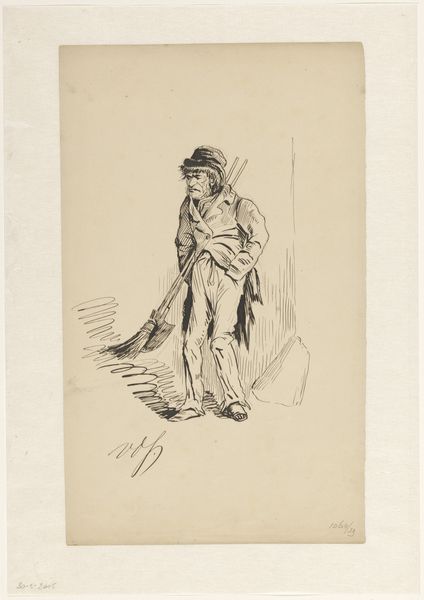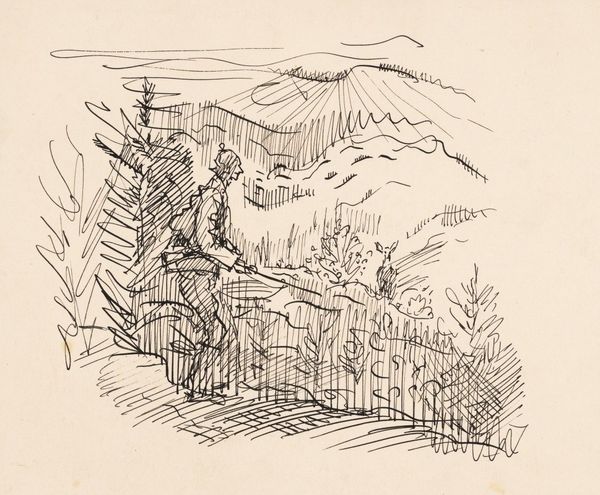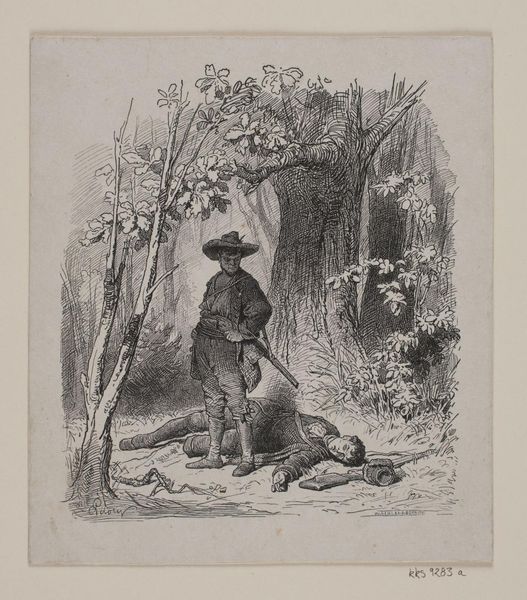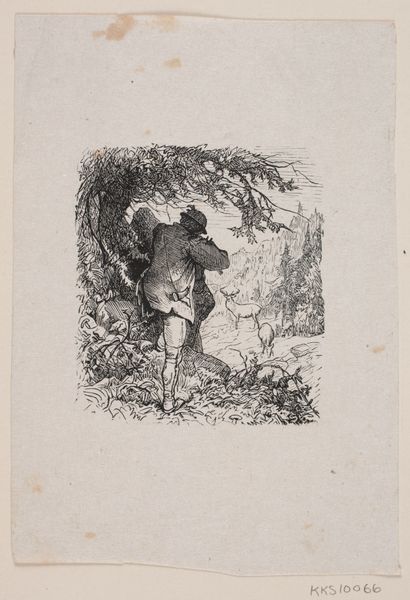
drawing, pencil
#
landscape illustration sketch
#
drawing
#
quirky sketch
#
narrative-art
#
pen sketch
#
landscape
#
figuration
#
personal sketchbook
#
ink drawing experimentation
#
romanticism
#
pen-ink sketch
#
pencil
#
sketchbook drawing
#
storyboard and sketchbook work
#
sketchbook art
#
initial sketch
Dimensions: height 266 mm, width 212 mm
Copyright: Rijks Museum: Open Domain
Pieter van Loon made this pencil drawing of a standing man with a bag in a landscape around 1839. The figure is presented from behind, his face hidden. He walks away from us, towards a rudimentary house surrounded by trees. The Romantic era saw a rise in landscape art, but also an idealization of the common man. It is worth asking, what public role did such images play? The figure is anonymous, perhaps a worker, but his direction of travel is unclear, and his purpose unknown. It seems to me that van Loon's sketch does not idealize the man. Rather, the landscape is the focus and the man is simply part of the view. By looking at van Loon's other works, and studying the art institutions of the Netherlands, we can get a clearer picture of his artistic project. Ultimately, this helps us better understand the social conditions that shape artistic production.
Comments
No comments
Be the first to comment and join the conversation on the ultimate creative platform.
